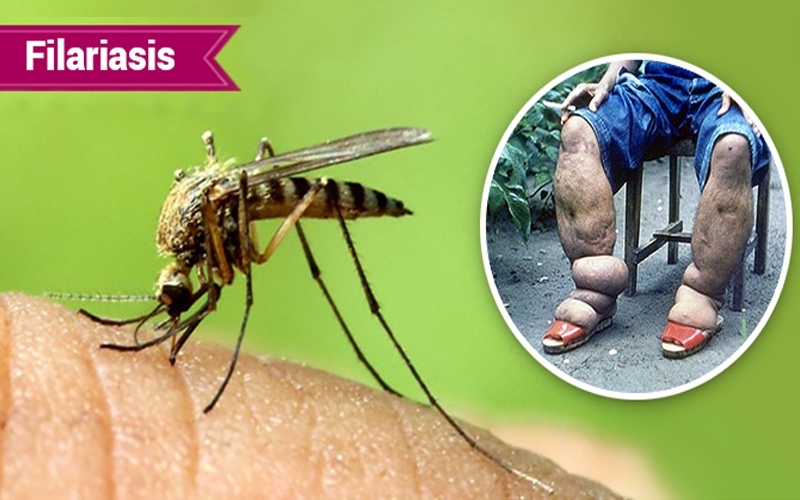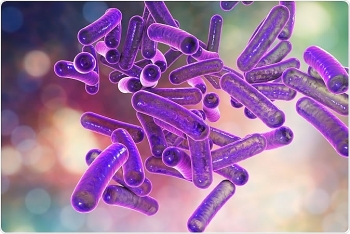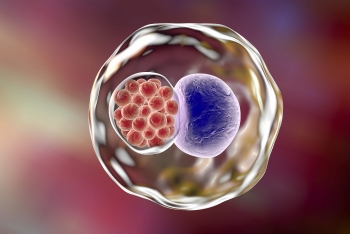Filariasis: Symptoms, Causes, Transmission, Treatments of a Common Diseases in India
 |
| Filariasis. Photo: Atiya Herbs |
Filariasis a parasitic disease transmitted by black flies and mosquitoes. These parasites are thin, round, worm-like organisms. They appear white or translucent when observed under a microscope.
The life span of filariae would be around 5 to 7 years. During their lifespan, they produce millions of larvae. The size of the female is between 250 and 300 μm long and the size of the males is roughly half as long as the females.
Filariasis Symptoms
 |
| Illustrative photo of Filariasis by WHO. |
Lymphatic filariasis infection involves asymptomatic, acute, and chronic conditions. The majority of infections are asymptomatic, showing no external signs of infection, although their blood is positive for microfilaria. This stage may last for months.
Acute episodes of local inflammation involving the skin, lymph nodes, and lymphatic vessels. The chronic condition shows edema with thickening of the skin and underlying tissues (the classical symptom of filariasis).
It usually affects the lower extremities. However, the arms, vulva, breasts, and scrotum (causing hydrocele formation) can also be affected. The edema in the extremities, breast, or genital area can result in the part becoming several times its normal size and is due to blockage of the vessels of the lymphatic system, according to AIMU.
Filariasis Causes
The disease is caused by three species of thread-like nematode worms, known as filariae – Wuchereria bancrofti, Brugia malayi and Brugia timori. Male worms are about 3–4 centimetres in length, and female worms 8–10 centimetres. The male and female worms together form “nests” in the human lymphatic system, the network of nodes and vessels that maintain the delicate fluid balance between blood and body tissues. The lymphatic system is an essential component of the body’s immune system.
Filarial infection can cause a variety of clinical manifestations, including lymphoedema of the limbs, genital disease (hydrocele, chylocele, and swelling of the scrotum and penis) and recurrent acute attacks, which are extremely painful and are accompanied by fever. The vast majority of infected people are asymptomatic, but virtually all of them have subclinical lymphatic damage and as many as 40% have kidney damage, with proteinuria and haematuria, as WHO cited.
Filariasis Transmission
Currently, there is no vaccine available for filariasis. Scientists are still working on developing a cure for filariasis.
Prevention is better than cure. As we all know, this disease is caused by the bite of mosquitoes, it is better to prevent the cause of this disease by:
- Wearing long sleeves and pants to prevent the bite of mosquitoes
- Apply DEET- based insect repellents
- Preventing the build-up of stagnant water
- Using mosquito mats, coils and nets if possible
- Though scientifically unproven, dark-colored clothing attracts mosquitoes, so it might be beneficial to avoid them.
In spite of all these measures, if filariasis is contracted, the best treatment would be a course of anthelmintic drugs or antibiotics. Anthelmintic would be the best option as it directly kills the worms. But if this isn’t feasible, antibiotics are a great alternative because they target the symbiotic bacteria that are present inside the worms. When the antibiotics kill these bacteria, the worms cannot survive and thrive inside their hosts, eventually hampering reproduction.
| Lymphatic filariasis in numbers: 893 million people in 49 countries worldwide remain threatened by lymphatic filariasis and require preventive chemotherapy to stop the spread of this parasitic infection. In 2000 over 120 million people were infected, with about 40 million disfigured and incapacitated by the disease. Lymphatic filariasis can be eliminated by stopping the spread of infection through preventive chemotherapy with safe medicine combinations repeated annually. From 2000 to 2018, 7.7 billion treatments were delivered to more than 910 million people at least once in 68 countries, considerably reducing transmission in many places. The population requiring MDA has declined by 42% (597 million) where infection prevalence has been reduced below elimination thresholds. The overall economic benefit of the program during 2000-2007 is conservatively estimated at US$ 24 billion. Treatments until 2015 are estimated to have averted at least US$ 100.5 billion of economic loss expected to have occurred over the lifetime of cohorts who have benefited from treatment. |
Filariasis Treatment
Currently, there is no vaccine available for filariasis. Scientists are still working on developing a cure for filariasis.
Prevention is better than cure. As we all know, this disease is caused by the bite of mosquitoes, it is better to prevent the cause of this disease by:
- Wearing long sleeves and pants to prevent the bite of mosquitoes
- Apply DEET- based insect repellents
- Preventing the build-up of stagnant water
- Using mosquito mats, coils and nets if possible
- Though scientifically unproven, dark-colored clothing attracts mosquitoes, so it might be beneficial to avoid them.
In spite of all these measures, if filariasis is contracted, the best treatment would be a course of anthelmintic drugs or antibiotics. Anthelmintic would be the best option as it directly kills the worms. But if this isn’t feasible, antibiotics are a great alternative because they target the symbiotic bacteria that are present inside the worms. When the antibiotics kill these bacteria, the worms cannot survive and thrive inside their hosts, eventually hampering reproduction, as reported by BYJU'S.
Filariasis Affected PopulationsFilariasis is a common disease in tropical regions of the world. The organism W. bancrofti is present throughout Africa, Asia, China, and South America. B. malayi is found in southern and southeast Asia. Filariasis is extremely rare in North America and occurs only when these organisms are imported from tropical regions. The infection is transmitted by several different types of tropical mosquitos which transfer the larval stage of the organism (microfilariae) from one host to another. Lymphatic filariasis affects about 120 million people worldwide. Short-term travelers to areas where it is endemic are at low risk for this infection. People who visit endemic areas for extended periods of time, and especially those who are in areas or situations in which they are intensely exposed to infected mosquitoes, can become infected. Most infections seen in the U.S. are in immigrants from endemic countries, according to the Centers for Disease Control and Prevention (CDC). |
 Shigellosis: Symptoms, Treatment and Prevention Shigellosis: Symptoms, Treatment and Prevention Shigellosis is a bacterial infection that affects the digestive system. The Shigella bacterium is spread through contact with contaminated feces. Below are information about its ... |
 Alzheimer disease: Symptoms and best Treatment Alzheimer disease: Symptoms and best Treatment Alzheimer’s disease, which was first recognized and described in 1906 by researcher Alois Alzheimer, is a progressive brain disease that initially manifests itself as minor ... |
 What is Chlamydia disease? What is Chlamydia disease? Chlamydia is a sexually transmitted disease caused by Chlamydia trachomatis bacteria. Chlamydia bacterial infections are more common among sexually active teens and young adults. Chlamydia ... |


























